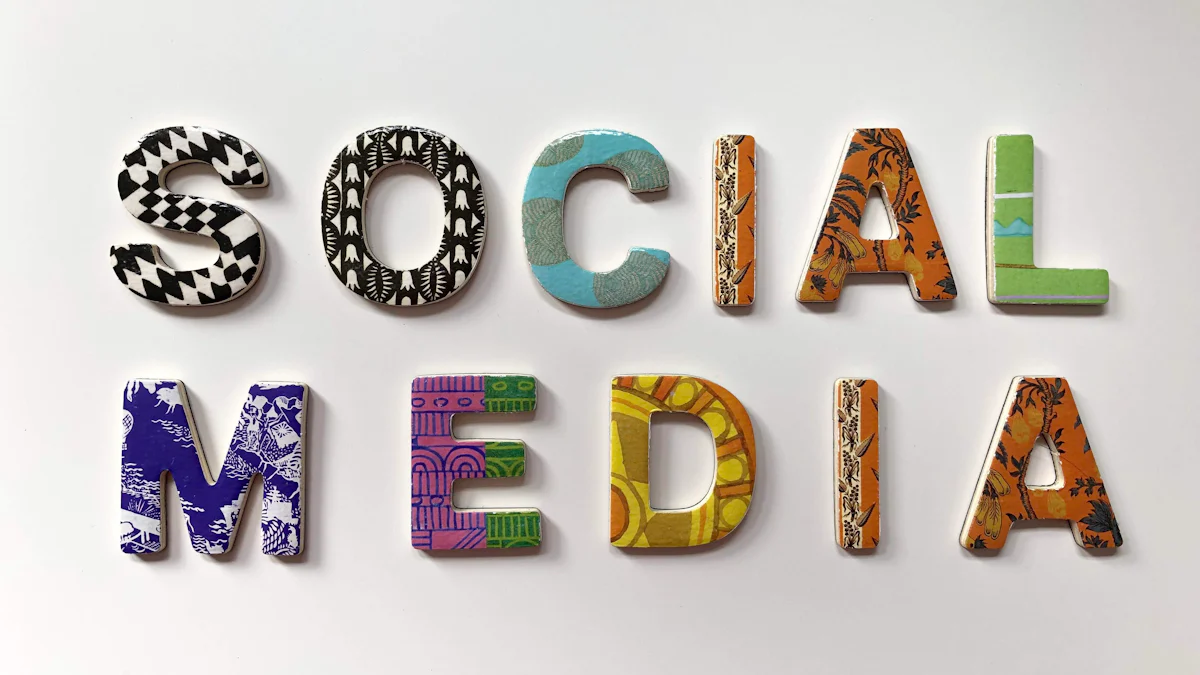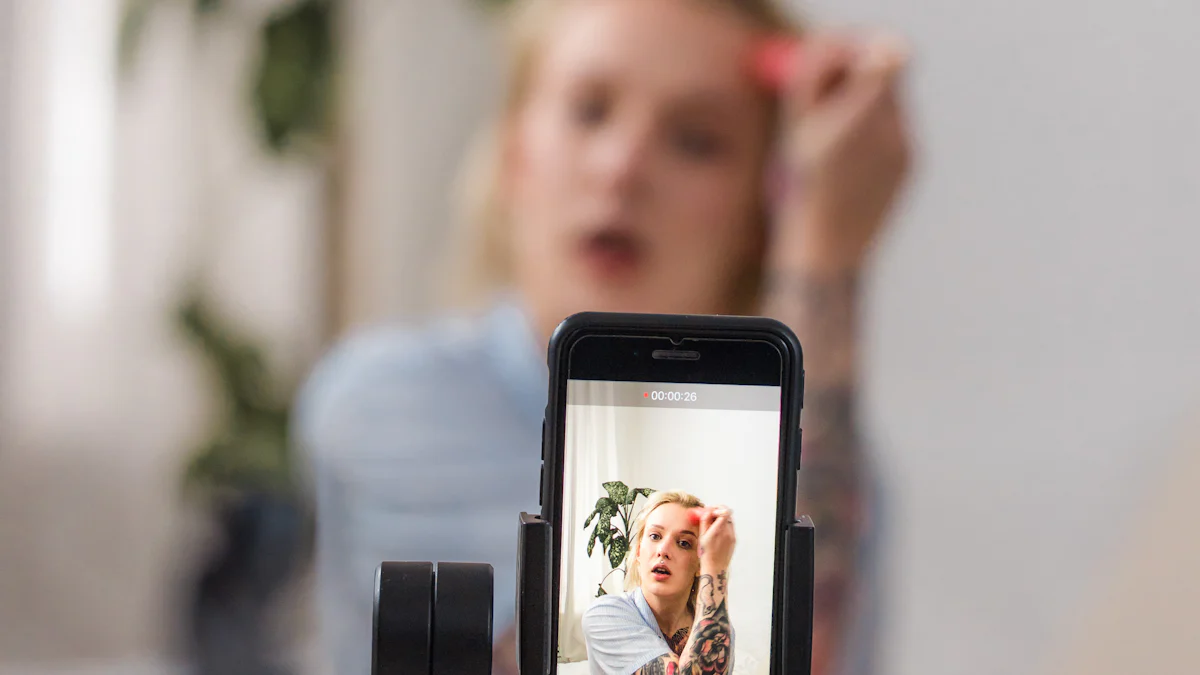What Is Social Media Whitelisting?

Whitelisting social media has emerged as a powerful marketing strategy. It allows you to leverage influencer accounts for advertising, making your brand's content appear more genuine and relatable. By using the influencer's handle, your ads gain authenticity, which can significantly enhance engagement. This approach is gaining traction because it often outperforms traditional ads by 20-50%. As brands strive to reach wider and more targeted audiences on social media networks, whitelisting social media becomes an essential tool for maximizing return on investment.
How Whitelisting Social Media Works

Social media whitelisting allows brands to run ads through an influencer's account, maintaining the authenticity of the message. This process involves granting advertising permissions to the brand, enabling them to use the influencer's handle for their ads. By doing so, brands can target specific audiences and track ad performance effectively. Let's explore how this works on different social media networks.
Whitelisting on Facebook
Whitelisting on Facebook provides brands with the ability to create dark posts. These are paid ads that do not appear on the influencer's timeline or news feed unless specifically targeted. This feature allows brands to maintain a clean and uncluttered feed for influencers while still reaching the desired audience. You can use Facebook Ads Manager to optimize these ads, conduct A/B tests, and make small edits to the content. This level of control ensures that your advertising efforts are both efficient and effective.
Whitelisting on Instagram
Instagram offers a unique opportunity for brands to leverage influencer content through whitelisting. By gaining access to an influencer's account, you can run ads that appear under their handle. This method enhances the authenticity of the ads and allows you to reach lookalike audiences. Instagram's platform supports branded content and partnership ads, which are ideal for maximizing the reach and impact of your campaigns. You can also add call-to-action buttons and modify ad copy to suit your marketing goals.
Whitelisting on TikTok
TikTok is well-suited for whitelisting due to its user-friendly ad account integration. By partnering with influencers, you can run ads that resonate with TikTok's dynamic audience. The platform allows you to create engaging content that appears as if it is coming directly from the influencer. This approach not only boosts brand visibility but also introduces influencers to new audiences. TikTok's algorithm supports this strategy by promoting content that aligns with user interests, ensuring that your ads reach the right people.
Benefits of Social Media Whitelisting
Social media whitelisting offers numerous advantages for both brands and influencers. By understanding these benefits, you can make informed decisions about incorporating this strategy into your marketing efforts.
Advantages for Brands
-
Enhanced Control and Customization: Whitelisting in social media allows you to have greater control over your advertising campaigns. You can make small edits to the copy and creative elements, ensuring that the message aligns perfectly with your brand's voice and goals. This flexibility helps in crafting more effective ads that resonate with your target audience.
-
Improved Audience Targeting: With influencer whitelisting, you can run targeted ads using the influencer’s account. This approach increases the probability of conversion as the content appears more authentic and relatable to the audience. You can also control who sees the influencer’s posts, allowing for precise audience segmentation.
-
Access to Valuable Insights and Analytics: Whitelisting provides you with improved insights and analytics. You can track ad performance more effectively, gaining a deeper understanding of what works and what doesn’t. This data-driven approach enables you to optimize your campaigns for better results.
-
Extended Reach and Engagement: By leveraging the influencer's established audience, your brand can reach a wider and more engaged audience. This expanded reach often leads to higher engagement rates compared to traditional ads, enhancing your brand's visibility and impact.
Advantages for Influencers
-
Increased Reach and Visibility: Influencer whitelisting allows you to expand your reach by introducing your content to new audiences. This exposure can lead to increased followers and engagement, boosting your overall influence on social media platforms.
-
Strengthened Brand Relationships: By participating in whitelisting campaigns, you can maintain and strengthen relationships with brands. This collaboration often leads to long-term partnerships, providing you with consistent opportunities for growth and income.
-
Authentic Content Creation: Whitelisting empowers you to create more authentic and engaging content. Since the ads appear under your handle, you can ensure that the messaging aligns with your personal brand, maintaining trust with your audience.
-
Additional Income Opportunities: Whitelisting offers you the chance to boost your income. Brands often compensate influencers for granting advertising permissions, providing a lucrative revenue stream alongside traditional sponsorship deals.
By embracing the benefits of social media whitelisting, both brands and influencers can achieve their marketing objectives more effectively. This strategy not only enhances the authenticity of ads but also fosters stronger connections between brands and their audiences.
Whitelisted Ads vs. Regular Ads

When you compare whitelisted ads to regular ads, several key differences emerge. Whitelisting social media provides you with enhanced control and customization, allowing your brand to optimize ad placements and improve effectiveness. Regular ads often lack this level of precision, as they typically follow a more generic approach.
Control and Customization
-
Ad Placement Control: Whitelisting allows you to create a list of approved placements. This ensures that your ads appear only in relevant environments, enhancing their relevance and effectiveness. Regular ads, on the other hand, may not offer the same level of placement control, potentially leading to less targeted exposure.
-
Creative Flexibility: With whitelisting, you gain creative flexibility and autonomy over the content posted. You can adjust elements like call-to-action buttons and ad copy to better align with your marketing goals. Regular ads often come with limitations in customization, restricting your ability to tailor the message to your audience.
-
Detailed Tracking and Measurement: Whitelisted ads provide comprehensive tracking and measurement capabilities. You can fully track and measure ad performance, empowering you to achieve your business objectives and measure ROI effectively. Regular ads might not offer the same depth of insights, making it harder to optimize campaigns.
Authenticity and Reach
-
Organic Appearance: Whitelisted ads often appear more organic and authentic. They blend naturally with the influencer's style, resonating better with the audience. This authenticity can lead to higher engagement rates compared to regular ads, which may seem more promotional and less genuine.
-
Enhanced Reach: By leveraging the influencer's established audience, whitelisted ads can connect your brand with consumers more effectively. This approach often results in higher reach and engagement rates. Regular ads might struggle to achieve the same level of audience connection and impact.
-
Types of Influencer Whitelisting: Different types of influencer whitelisting, such as those on platforms like Facebook, offer unique opportunities for brands. For instance, whitelisting on Facebook allows you to run dark ads and boost sponsored content, providing greater control over content and audience targeting. Regular ads may not offer these advanced features, limiting your strategic options.
Steps to Implement Social Media Whitelisting
Implementing whitelisting in social media requires a strategic approach. By following these steps, you can effectively harness the power of influencer whitelisting to boost your brand's visibility and engagement.
Selecting the Right Influencer
-
Identify Your Target Audience: Begin by understanding who you want to reach. Knowing your audience helps you choose an influencer whose followers align with your brand's target demographic.
-
Research Potential Influencers: Look for influencers who share your brand's values and have a strong connection with their audience. Consider their engagement rates, content style, and previous collaborations.
-
Evaluate Influencer Credibility: Ensure the influencer has a genuine following. Check for authentic engagement and interactions on their posts. This step is crucial to avoid partnering with influencers who have inflated follower counts.
-
Assess Content Quality: Review the influencer's content to ensure it aligns with your brand's image. High-quality content enhances the effectiveness of the whitelisting process.
Setting Up Permissions
-
Negotiate Terms: Discuss the terms of the partnership with the influencer. This includes compensation, duration of the campaign, and specific content requirements.
-
Establish Clear Guidelines: Provide the influencer with clear guidelines on how your brand should be represented. This ensures consistency and maintains brand integrity.
-
Link Accounts: Connect your brand's advertising account with the influencer's account. Platforms like Facebook and Instagram require linking through Business Manager for seamless integration.
-
Grant Advertising Permissions: Obtain the necessary permissions from the influencer to access their account for advertising purposes. This step is essential for running ads under their handle.
Creating and Managing Ads
-
Develop Compelling Ad Content: Create ads that resonate with the influencer's audience. Use engaging visuals and authentic messaging to capture attention.
-
Optimize Ad Placement: Utilize the influencer's account to place ads strategically. This approach enhances ad relevance and improves campaign effectiveness.
-
Monitor Ad Performance: Track the performance of your ads using analytics tools. Analyze metrics such as reach, engagement, and conversion rates to assess the success of your campaign.
-
Adjust and Refine: Based on performance data, make necessary adjustments to your ads. This could involve tweaking the ad copy, visuals, or targeting parameters to optimize results.
By following these steps, you can effectively implement influencer whitelisting and maximize the impact of your social media campaigns. This strategy not only enhances the authenticity of your ads but also strengthens your brand's connection with its audience.
Costs Involved in Social Media Whitelisting
Understanding the costs associated with social media whitelisting is crucial for effectively budgeting your marketing efforts. This section breaks down the primary expenses you might encounter.
Influencer Fees
When you engage in social media whitelisting, expect to pay influencer fees. Influencers often charge for granting advertising permissions. According to a survey, 51% of influencers require a fee for whitelisting, boosting, or amplifying content. This fee compensates influencers for the use of their established audience and brand image. The cost varies based on the influencer's reach, engagement rates, and niche. High-profile influencers with large followings typically command higher fees. However, micro-influencers might offer more affordable options while still providing access to a targeted audience.
Advertising Budget
In addition to influencer fees, you need to allocate a budget for the actual advertising spend. This budget covers the cost of running ads on platforms like Facebook, Instagram, and TikTok. The amount you spend depends on your campaign goals, target audience, and desired reach. For instance, marketers have noted that Instagram whitelisting often delivers the highest return on investment among social media platforms. Therefore, investing in Instagram ads might be a strategic choice if your audience is active there.
To maximize your advertising budget, consider conducting A/B tests to determine which ad creatives and targeting strategies yield the best results. This approach allows you to optimize your spending and achieve better outcomes. By carefully managing both influencer fees and your advertising budget, you can effectively leverage social media whitelisting to enhance your brand's visibility and engagement.
Best Practices for Successful Whitelisting
To make the most of influencer whitelisting, you should follow some best practices. These strategies will help you build strong partnerships and optimize your campaigns for success.
Building Strong Partnerships
-
Open Communication: Establish clear and open communication with influencers. Discuss your goals and expectations from the start. This transparency helps in aligning both parties' objectives and ensures a smooth collaboration.
-
Mutual Respect: Treat influencers as valued partners. Recognize their expertise and creativity. By respecting their input, you foster a positive relationship that benefits both sides.
-
Long-term Collaboration: Aim for long-term partnerships rather than one-off campaigns. Consistent collaboration builds trust and allows for more authentic content creation. Influencers who feel valued are more likely to invest in your brand's success.
-
Learning from Experts: Leverage the opportunity to learn from influencers. They possess unique insights into their audience and content creation. As one expert noted, "Whitelisting is an opportunity to learn from experts!" Use this knowledge to refine your marketing strategies.
Monitoring and Optimization
-
Regular Monitoring: Keep a close eye on your whitelisted ads. Use analytics tools to track performance metrics such as reach, engagement, and conversion rates. Regular monitoring helps you identify what works and what needs improvement.
-
Data-Driven Decisions: Base your decisions on data. Analyze the performance data to understand audience behavior and preferences. This approach allows you to make informed adjustments to your campaigns.
-
Continuous Optimization: Optimize your ads continuously. Experiment with different types of influencer whitelisting to see which ones yield the best results. Adjust ad copy, visuals, and targeting parameters based on performance insights.
-
Feedback Loop: Create a feedback loop with influencers. Encourage them to share their observations and suggestions. This collaboration can lead to innovative ideas and improved campaign outcomes.
By following these best practices, you can enhance the effectiveness of your influencer whitelisting efforts. Building strong partnerships and focusing on monitoring and optimization will help you achieve your marketing goals and maximize your return on investment.
Social media whitelisting offers a strategic advantage for businesses aiming to enhance their digital marketing efforts. By leveraging influencer accounts, you can ensure your content reaches the right audience, maximizing engagement and conversions. This approach not only optimizes ad placements but also reduces wasteful spending on irrelevant exposures. Consider incorporating whitelisting social media into your strategy to amplify your brand's presence. To explore the benefits of social media whitelisting further, consult with experts who can guide you in crafting effective campaigns. Embrace this innovative tactic to elevate your marketing success.
FAQ
What is whitelisting in social media?
Whitelisting in social media involves granting a brand permission to access an influencer's social media account. This allows the brand to display its content on the influencer's channel or on selected users' feeds. By doing so, the brand can leverage the influencer's established audience to enhance the authenticity and reach of its ads.
How do you prepare for whitelisting on different social media platforms?
Preparation for whitelisting varies across platforms. Generally, you need to establish a partnership with the influencer and agree on terms. Then, link your advertising account with the influencer's account. Platforms like Facebook and Instagram require integration through Business Manager. Ensure you have clear guidelines and permissions in place to manage the ads effectively.
What are the benefits of social media whitelisting?
Social media whitelisting offers numerous benefits. It enhances the authenticity of ads, improves audience targeting, and provides valuable insights into ad performance. Brands can reach wider audiences and achieve higher engagement rates. Influencers also benefit from increased visibility and strengthened brand relationships.
What is whitelisting on Instagram?
Whitelisting on Instagram allows brands to run ads using an influencer's handle. This method makes the ads appear more authentic and relatable. Brands can target lookalike audiences and use Instagram's features like branded content and partnership ads to maximize campaign impact.
What are the advantages of social media whitelisting for influencers?
Influencers gain several advantages from social media whitelisting. They can expand their reach and visibility, strengthen relationships with brands, and create more authentic content. Additionally, influencers often receive compensation for granting advertising permissions, providing an additional income stream.
Are you ready to dive into the world of social media whitelisting?
If you're ready to explore the potential of social media whitelisting, start by identifying suitable influencers and establishing partnerships. This strategy can significantly boost your brand's presence and engagement on social media platforms.
See Also
Effective Techniques For Social Media Whitelisting Success
A Deep Dive Into Cybersecurity Whitelisting Practices
Essential Steps For Safeguarding Influencer Whitelisting
